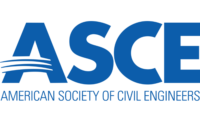By most accounts, the country’s infrastructure is crumbling. American bridges are falling down, my fair lady.
The American Society of Civil Engineers’ (ASCE’s) 2021 Report Card for America’s Infrastructure awarded the nation’s infrastructure a C- grade. Eleven of the scorecard’s 17 categories scored in the “D” range.
In late March, President Biden unveiled a two-part, $2.6 trillion infrastructure and jobs plan designed to address such shortcomings. The plan targets traditional infrastructure projects, such as crumbling bridges, broken roads, water pipes ridden with lead, schools lacking adequate ventilation, etc., as well as nontraditional items, including broadband internet, clean energy, and more.
Such a large investment into the country's infrastructure could pay dividends. Per an S&P Global report, a $2.1 trillion boost of public infrastructure spending over a 10-year period, to the levels (relative to GDP) of the mid-20th century, could add as much as $5.7 trillion to the U.S. over the next decade, creating 2.3 million jobs by 2024 as the work is completed. The additional 0.3% boost to productivity per year it generates could lead to a net of 713,000 more jobs by 2029.
Support or Dissent?
While there is a great deal of support behind infrastructure funding, there is opposition as well. Critics of Biden's plan cite its amount and its numerous "unessential" elements, such as electric car charging stations. Senate Minority Leader Mitch McConnell has labeled the proposal a “trojan horse for massive tax increases and a whole lot more debt and spending that is unrelated to infrastructure.”
While the path to approval is littered with political hurdles, one solution may lie in the creation of a nonpartisan national infrastructure board — an idea touted by the Campaign for Common Good, a coalition destined to, in its own words, “restore the freedom of officials and citizens to use common sense.”
“For years, political leaders have said that they are committed to fixing America’s infrastructure, but nothing happens,” said Philip K. Howard, chair of the Campaign for Common Good. “Even when funding is provided, projects are often not ready for construction or become ensnared as bargaining chips in political gamesmanship. What is needed is a credible bipartisan body similar to base-closing commissions that can set priorities as well as expedite approvals. Australia, Britain, and Canada all have such bodies. Why is the United States lagging here as well?”
Regardless if the infrastructure bill gains Congress’s blessing, Americans are already largely footing the bill. In a recent interview with PBS Newshour, Emily Feenstra, managing director of government relations and infrastructure initiatives, ASCE, said failing infrastructure costs American households an average of $3,300 a year.
“When the pothole messes with your alignment that you have driven over five or six times on the way to work, when a water main break shuts down a business, when a black out — as we saw in Texas — wreaks havoc, these things cost money," she said. "They add up. They make our economy less productive.”
The Hiring Brigade
While the Biden Infrastructure plan (if approved) is sure to stir up business, other opportunities — such as IAQ/ventilation concerns brought on by the COVID-19 pandemic and the $122 billion in stimulus funds earmarked for the reopening of K-12 schools — are bringing buyers to the table. Figuratively, the levee can only hold back such pent-up demand for so long.
Autodesk quantifies this boom in its “2021 Construction Outlook: Risks & Opportunities” report, stating that new starts in 2021 are forecast to increase 6% with an additional 6% increase in nonresidential projects and a 10% increase in non-building infrastructure projects.
This projected 2021 goldrush is sure to lead to a variety of temporary/subcontracting opportunities. I recently had the pleasure of speaking with two experts in the field: Aaron Schuh, CEO/president, Recruit4Business, and Luke Sheppard, author of “Driving Great Results: Master the Tools You Need to Run a Great Business.” We discussed the return of the Roaring 20s, the impending boom in design services, the major pitfalls that often accompany subcontracting work, the importance of personality assessments during the interview process, and more. These conversations, presented as both videos and podcast episodes, will soon be up on our website. I suggest you check them out.
Conclusion
Policymakers frequently lead their arguments by citing the number of blue collar/construction jobs that each piece of legislation will create, but, when these projects are funded, where are all of the boots on the ground going to come from? Any investment in federal infrastructure must also aim to empower the skilled trades by hiring, training, and retaining more skilled tradespeople.
With the demand for mechanical engineers set to increase, the pool of free agent designers is set to diminish. What are you doing to ensure your firm is prepared and ready for this surge? What pipelines have you established to strengthen your staff when duty calls? America is counting on you to help rebuild its failing infrastructure, but is the framework of your firm strong enough to shoulder the demand? If not, now’s as good of time as any to muscle up. Ask not what your country can do for you – ask what you can do for your country, right?





